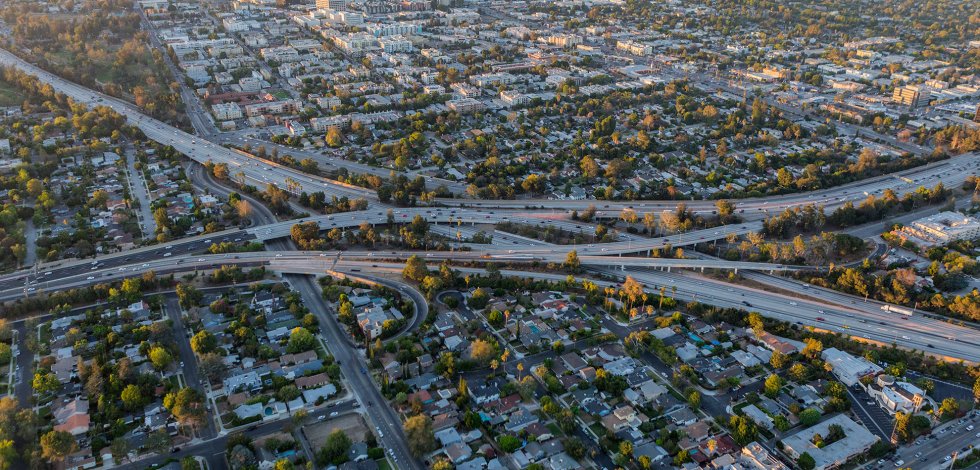
A new model for local news
Crosstown, a news website created by USC Annenberg and the USC Viterbi School of Engineering’s Integrated Media Systems Center (IMSC), has been awarded funding from Google for an ambitious effort to bring data-driven journalism about crime, traffic and air quality directly to Los Angeles neighborhoods.
Crosstown will use the nearly $270,000 in Google News Initiative Innovation Challenge funds to create The Crosstown Neighborhood Newsletter Project, a new model for local news that will leverage neighborhood-level data to create specialized, hyperlocal email newsletters to serve L.A.’s many and varied communities.
“We’re thrilled about this opportunity from the Google News Initiative,” said Gabriel Kahn, USC Annenberg professor of professional practice and editor and publisher of Crosstown. “Los Angeles is a vibrant city, a media capital and a cultural beacon — but it is pockmarked with news deserts. At Crosstown, we’ve been collecting data about every Los Angeles neighborhood. Now, with this Innovation Challenge, we can develop a new way to deliver this data to everyone in L.A.”
Founded in 2018, Crosstown grew out of a partnership forged through a grant from the Annenberg Foundation to support collaborative research between USC Annenberg and the Integrated Media Systems Center at USC Viterbi. Led by Kahn of USC Annenberg and Cyrus Shahabi, chair of the USC Department of Computer Science and director of IMSC, the team began experimenting with ways to convert data into a new type of local news. In addition to grants from GNI and the Annenberg Foundation, Crosstown has also received funding support from the Lenfest Institute/Facebook Journalism Project.
Crosstown transforms data about key quality-of-life issues, such as traffic, crime and air quality, into local news stories on the website tailored to individual communities. USC Annenberg undergraduate reporters work in tandem with USC Viterbi graduate students to find the stories in the data sets.
“This is an exciting application of our AI and data science research at IMSC, as we need to acquire, manage, analyze and visualize large amount of city-wide data in real-time for journalists’ use so they can see the patterns that would translate to news stories,” Shahabi said.
With the Neighborhood Newsletter Project, Crosstown aims to take these kinds of stories beyond the Crosstown website and into 110 distinct local email newsletters, one for each neighborhood in Los Angeles. Audiences will be able to subscribe to a community’s specific newsletter, which will keep them up to date on a range of issues by giving them data they can’t get anywhere else. That unique content will allow Crosstown to build a membership model that will generate the revenue needed to sustain the project, Kahn said.
“Part of the Google funding will help us scale up,” said George Constantinou, a PhD candidate in computer science at USC Viterbi and Crosstown’s chief data scientist. “Each neighborhood will have a customized newsletter for people who want to learn more about their neighborhoods — or even people who want to move to L.A. and want to explore different neighborhoods.”
“I think [the GNI funding] is a testament to the need for local journalism,” said Ethan Ward, a senior journalism major at USC Annenberg, who started as a reporter for Crosstown in June. “I love that we’re focused on issues that residents of L.A. care about.”
Google launched the North America Innovation Challenge in May to focus on local news. The Crosstown Neighborhood Newsletter Project is one of 34 projects in 17 U.S. states and Canadian provinces to receive funding totaling $5.8 million.
“These selected projects are from news providers in both rural and urban communities across the region, and are all dedicated to serving a diverse range of audiences,” Madhav Chinnappa, director of the Google News Initiative, said in a statement posted on Google’s The Keyword blog. “The thing that knits them all together is their passion for local news.”
Kahn notes that the newsletters, which are scheduled to launch in late 2020, will certainly be data-driven, but will still tell very human stories about the neighborhoods they cover.
“We are trying to automate our data processes, but not our stories,” Kahn said. “We are trying to make the data accessible to our audience as soon as we receive it through our map and our dashboards. But we still do traditional reporting about that data.”